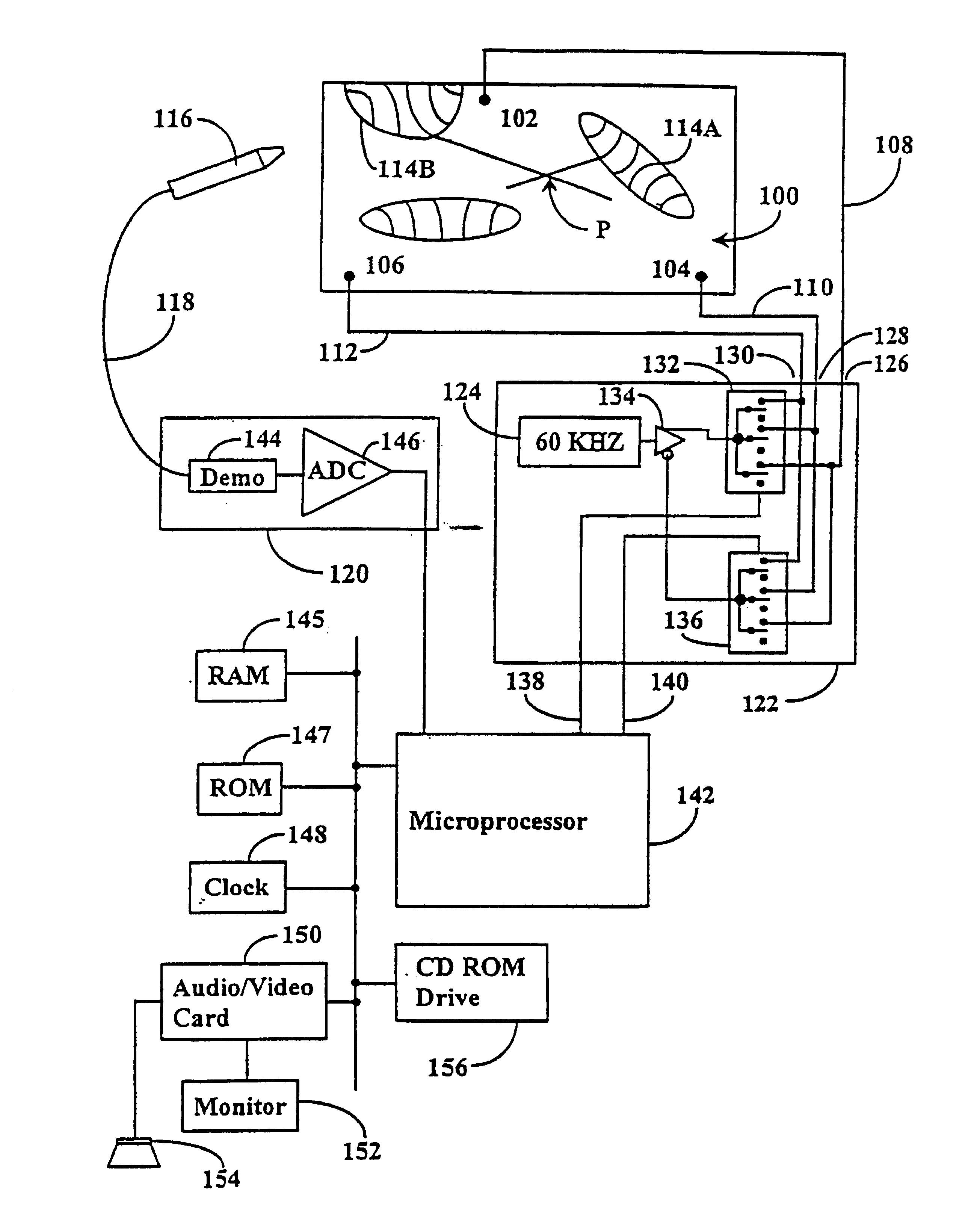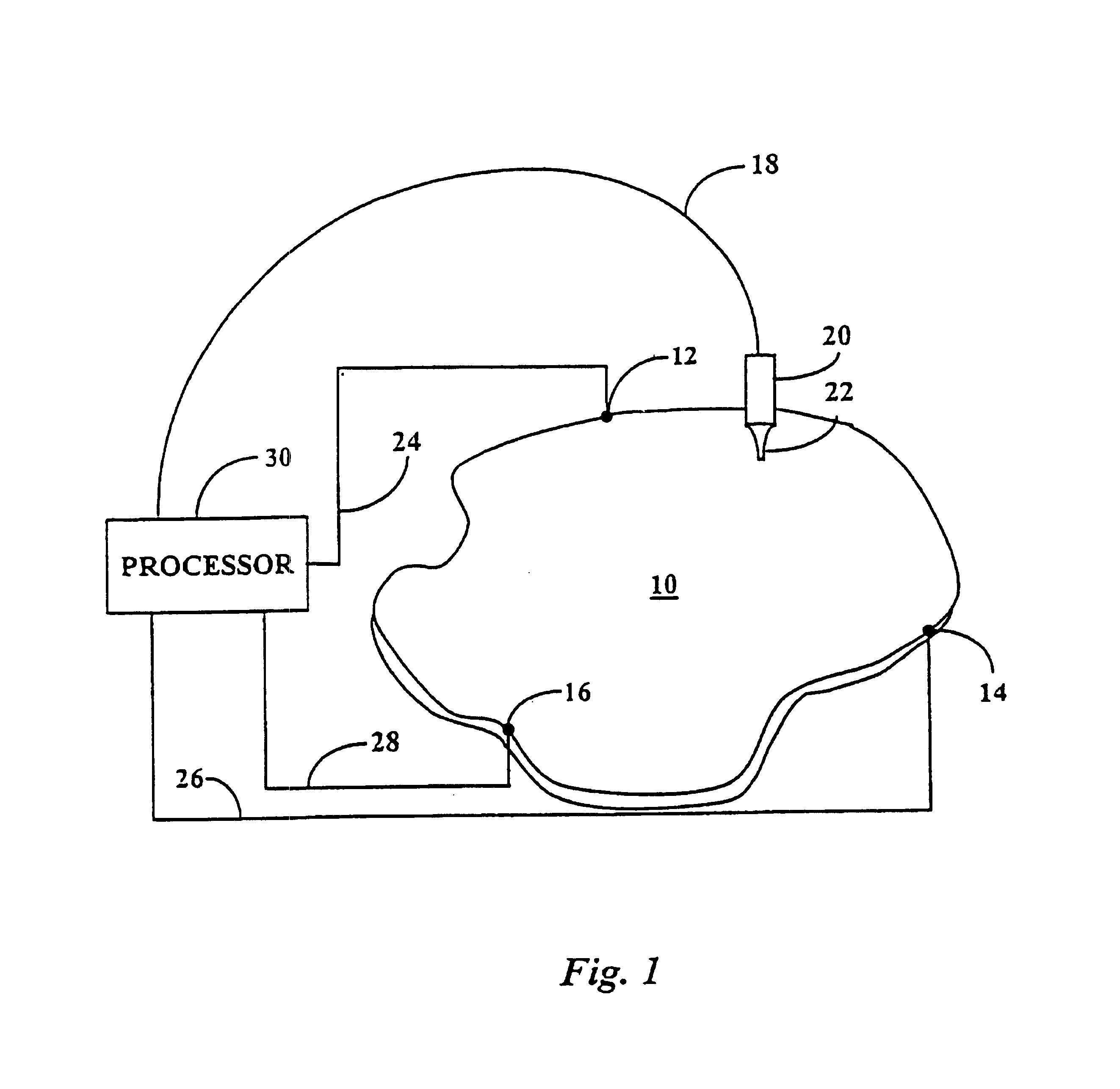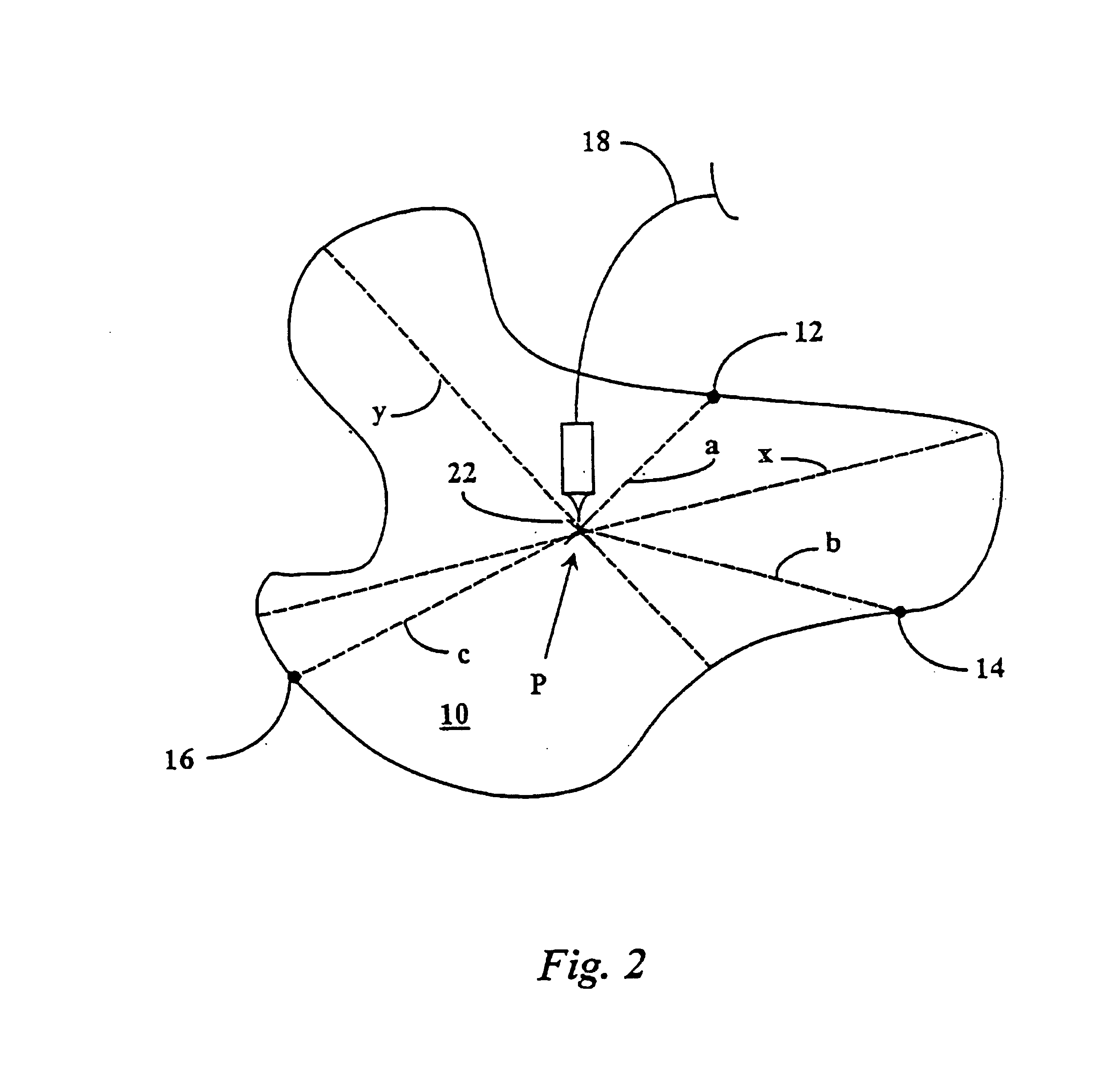Surface position location system and method
a position location and surface technology, applied in the field of surface position location system and method, can solve the problems of not being well suited to a complex shaped surface of either two or three dimensions, position detectors such as the devices disclosed in the greanias, and confined to displays or flat surfaces, so as to increase the comfort of holding the stylus, improve the probability of holding, and maximize the probability of holding the user
- Summary
- Abstract
- Description
- Claims
- Application Information
AI Technical Summary
Benefits of technology
Problems solved by technology
Method used
Image
Examples
first embodiment
[0151]this aspect of the present invention is illustrated in FIG. 14b. In this view the connections at the proximate end of shielded cable 118 are the same as in FIG. 14a. At the distal end of stylus 116 there are some changes that have been made to effect the grounding of the user when holding stylus 116 to eliminate the parallel antenna effect inadvertently created by the user holding stylus 116 near center conductor / antenna 802′. Here it can be seen that the distal end of shielded cable 118, in addition to having center conductor 802′ exposed, has a portion of shield 800′ exposed. In addition, stylus 116 defines a hole 804 therethrough so that when a user holds stylus 116 a portion of one of the user's fingers must extend through hole 804 and make contact with shield 800′, thus grounding the user.
second embodiment
[0152]this aspect of the present invention is illustrated in FIGS. 14c and 14d with FIG. 14d showing a cut-away view of the distal end of stylus 116 to illustrate the internal configuration of this embodiment. In these views the connections at the proximate end of shielded cable 118 are the same as in FIGS. 14a and 14b. In FIG. 14c stylus 116 includes three portions: tip 810; main body 812; and conductive grip 806 that extends around stylus 116 at the point of the user's grasp. In FIG. 14d a portion of tip 810 and conductive grip 806 have been cutaway to illustrate the internal structure of the distal end of stylus 116. The internal arrangement is similar to that of FIG. 14b with the exception of the length of shield 800′ that has been exposed and dressing of a pig-tail 808 of shield 800′ back beneath conductive grip 806. Thus, when the user grasps stylus 116 with conductive grip 806 the user is grounded by the electrical interaction of conductive grip 806 and shield 800′ and pig-ta...
PUM
 Login to View More
Login to View More Abstract
Description
Claims
Application Information
 Login to View More
Login to View More - R&D
- Intellectual Property
- Life Sciences
- Materials
- Tech Scout
- Unparalleled Data Quality
- Higher Quality Content
- 60% Fewer Hallucinations
Browse by: Latest US Patents, China's latest patents, Technical Efficacy Thesaurus, Application Domain, Technology Topic, Popular Technical Reports.
© 2025 PatSnap. All rights reserved.Legal|Privacy policy|Modern Slavery Act Transparency Statement|Sitemap|About US| Contact US: help@patsnap.com



